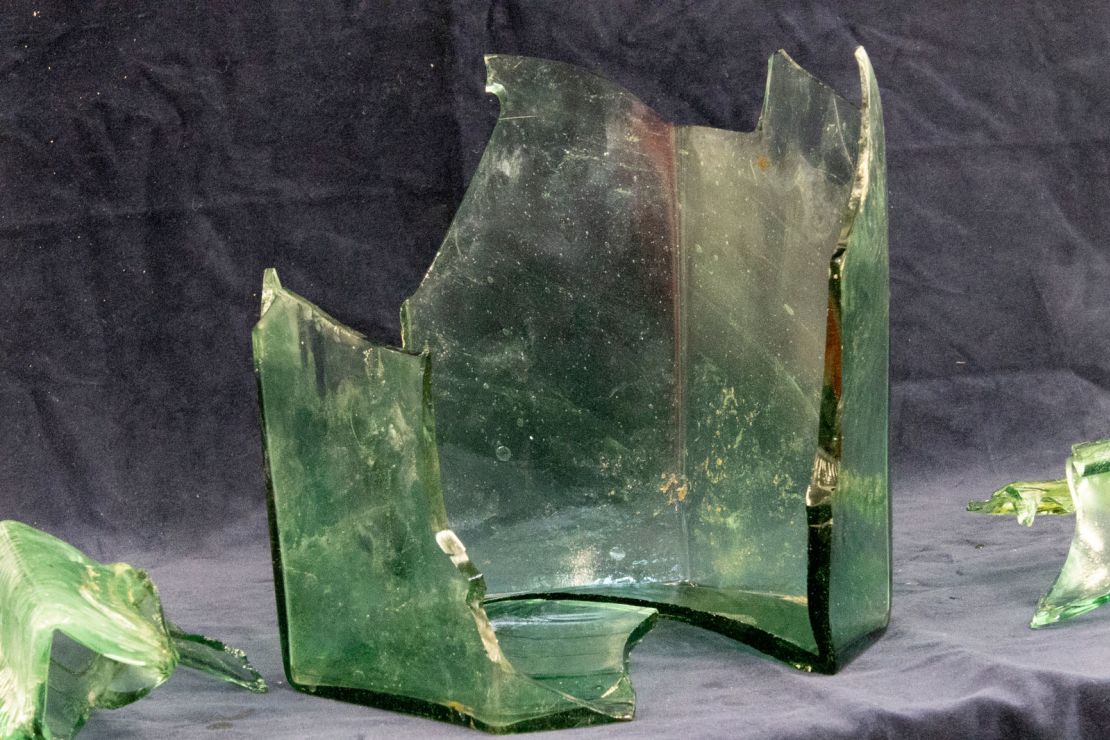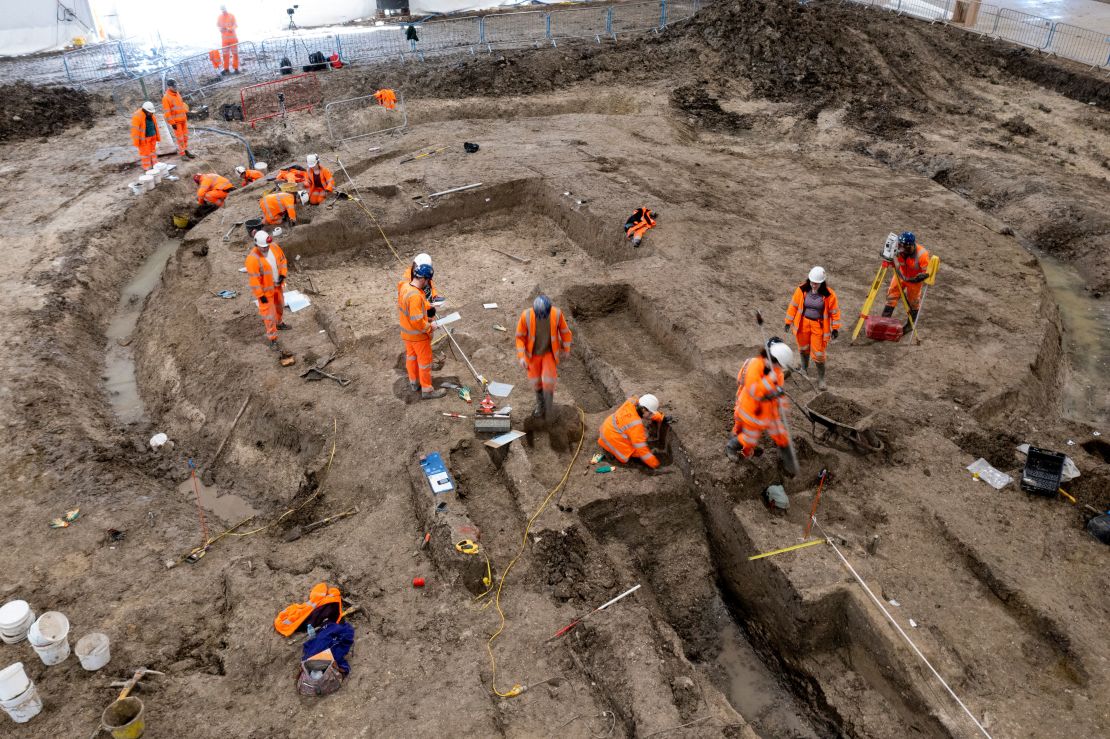Archeologists have uncovered a set of “incredible” rare Roman statues while excavating a site in England ahead of a high speed rail project, the rail company said in a statement.
Two complete statues of a woman and a man, along with the head of a child, were found at the site of the old St Mary’s Norman church in Stoke Mandeville, Buckinghamshire, south east England, while archeologists were excavating a ditch around the foundations of an Anglo-Saxon tower.
As experts working on the High Speed 2 (HS2) project dug down, they found the three “stylistically Roman” busts, a discovery which archeologists have described as “astounding.”

“For us to end the dig with these utterly astounding finds is beyond exciting,” Rachel Wood, lead archaeologist for Fusion JV, who is working on the project, said in a statement.
“The statues are exceptionally well preserved, and you really get an impression of the people they depict – literally looking into the faces of the past is a unique experience,” Wood added.
“Of course, it leads us to wonder what else might be buried beneath England’s medieval village churches. This has truly been a once in a lifetime site and we are all looking forward to hearing what more the specialists can tell us about these incredible statues and the history of the site before the construction of the Norman church.”

Two of the busts were made up of a head and torso which had been split apart, which experts say “is not entirely unusual,” because statues were commonly vandalized before being torn down.
Experts also retrieved an “incredibly well-preserved” hexagonal glass Roman jug – which, though it is presumed to be over 1,000 years old, had large pieces intact – as well as large roof tiles, painted wall plaster and Roman cremation urns.
The team believe that the site – a natural mound, covered with soil to make a taller mound – may have been a Bronze Age burial site. This was later replaced by a square building, which experts think is a Roman mausoleum.
“Roman materials found in the ditch around are too ornate and not enough in number to suggest the site was a domestic building,” HS2 said in a press release.
The findings will be transferred to a specialist laboratory, where they will be cleaned and examined.
















